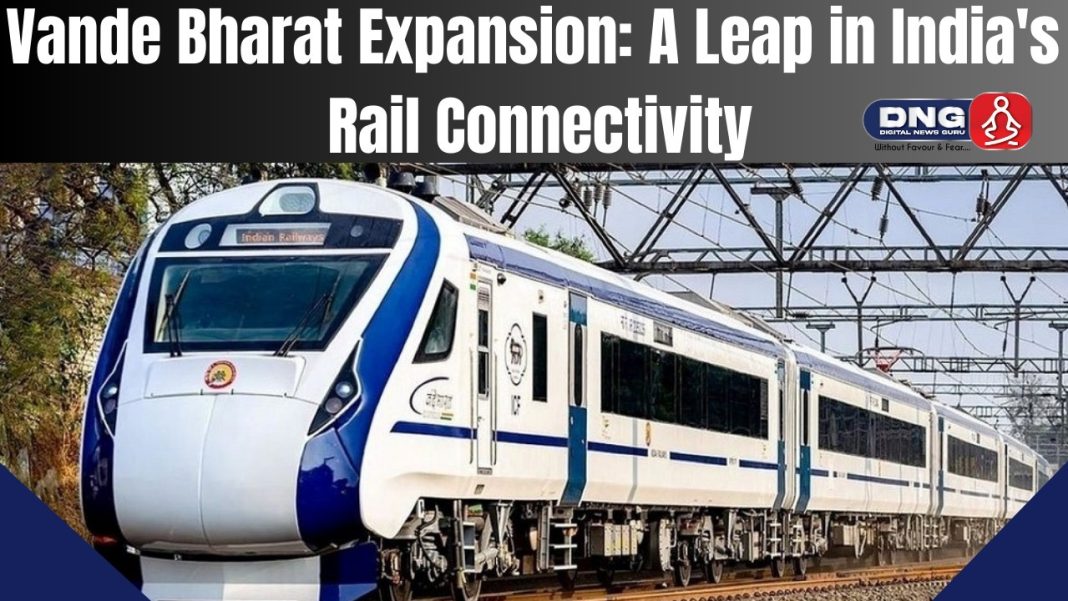DIGITAL NEWS GURU DELHI DESK:
Vande Bharat Expansion: A Leap in India’s Rail Connectivity
India’s ambitious rail modernization efforts received a significant boost as Prime Minister Narendra Modi is set to inaugurate three new Vande Bharat Express trains on September 15, 2024.
These trains, part of India’s growing fleet of semi-high-speed services, will enhance connectivity in Jharkhand, particularly linking key cities like Tatanagar, Patna, Varanasi, and Berhampur. The launch of these new routes marks a vital milestone in the nation’s ongoing rail infrastructure transformation, signaling India’s push toward faster, more efficient, and comfortable travel for its citizens.
The Vande Bharat Phenomenon
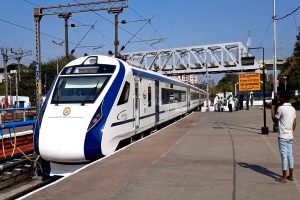
The Vande Bharat Express, also known as Train 18, has become a symbol of India’s technological progress in the transportation sector. Designed and manufactured domestically by the Integral Coach Factory (ICF) in Chennai, the train boasts state-of-the-art features such as automatic doors, Wi-Fi, GPS-based information systems, and regenerative braking systems. With a top speed of 160 km/h, Vande Bharat trains are significantly faster than traditional Indian Railways’ express services, cutting travel time between major cities.
The ongoing expansion of Vande Bharat services is a reflection of the government’s commitment to enhance railway connectivity, particularly in underdeveloped or less-connected regions. The new trains being introduced will link critical urban centers in Jharkhand and neighboring states, further integrating economic corridors and supporting regional development.
Enhancing Connectivity in Jharkhand
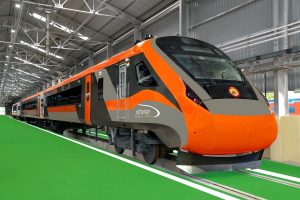
One of the major routes to be launched connects Tatanagar to Patna. Tatanagar is a critical industrial hub, while Patna is Bihar’s capital, making this route essential for business and regional trade. The second route from Deoghar to Varanasi connects the religiously significant city of Deoghar, a major pilgrimage site, with Varanasi, one of the most spiritually important cities in India. The third route links Tatanagar to Berhampur, a coastal city in Odisha, further improving connectivity between eastern and northeastern India.
These new routes are expected to significantly reduce travel times, making business, tourism, and pilgrimages more accessible and less time-consuming. Faster trains and enhanced infrastructure will also help boost tourism to these historically and religiously significant locations.
Strategic Importance of Vande Bharat’s Expansion
The expansion of Vande Bharat Express services is strategically important for several reasons. Firstly, it supports the Indian government’s mission to develop world-class transportation infrastructure. Improved rail networks enhance not only passenger convenience but also economic growth by facilitating faster movement of goods and services. By expanding rail services in the less-developed regions of Jharkhand and Odisha, the government aims to catalyze regional economic development and create employment opportunities.
The newly inaugurated routes also align with India’s broader goal of reducing carbon emissions. Vande Bharat trains are energy-efficient, utilizing advanced braking systems that regenerate electricity. This eco-friendly aspect of the service makes it a key component of India’s climate action strategy.
Modernizing India’s Rail Infrastructure
The Indian Railways network, one of the largest in the world, has long been the backbone of the country’s transportation infrastructure. However, it has historically been plagued by delays, overcrowding, and outdated technology. The Vande Bharat initiative is part of a broader rail modernization effort that seeks to improve the efficiency, safety, and comfort of railway travel.
Over the past few years, the Indian government has invested heavily in upgrading tracks, stations, and signaling systems. Along with the introduction of new trains like Vande Bharat, these investments are beginning to bear fruit. Passengers now enjoy faster trains, cleaner stations, and more reliable services. In particular, the Vande Bharat trains are seen as a flagship project that symbolizes India’s march toward a more modern and prosperous future.
Economic Implications of the Vande Bharat Expansion
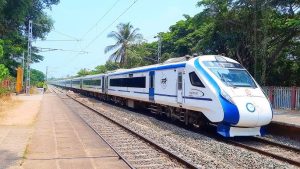
The introduction of new Vande Bharat routes is likely to have several positive economic impacts. For one, faster and more reliable trains will improve the movement of goods across regions, which is crucial for industries that rely on just-in-time supply chains. Moreover, the enhanced connectivity is expected to boost local economies by facilitating tourism. Pilgrimage destinations like Deoghar and Varanasi are likely to see increased footfall, benefiting local businesses such as hotels, restaurants, and transport operators.
Additionally, the expansion of rail services will create direct and indirect employment opportunities. The construction, operation, and maintenance of new trains and upgraded stations require skilled labor, while improved connectivity can spur local entrepreneurship.
Regional Development and Inclusivity
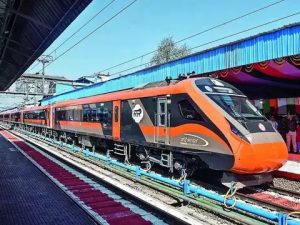
One of the key goals of the Vande Bharat expansion is to promote inclusive development. By focusing on underserved regions such as Jharkhand and Odisha, the government is addressing long-standing regional disparities in infrastructure. These areas have historically lagged behind in terms of industrial development and job creation, partly due to poor connectivity.
With the launch of faster trains and improved rail links, regions like eastern India could see a surge in investment and development. Better connectivity can encourage industries to set up operations in these areas, creating jobs and stimulating local economies. The expansion of Vande Bharat services is, therefore, not just about transportation—it’s also a tool for regional development and economic inclusion.
Challenges and the Road Ahead
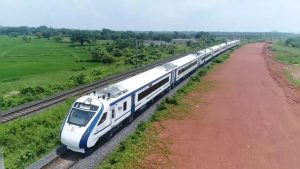
While the Vande Bharat initiative has been largely successful, it faces certain challenges. One of the main concerns is the cost of scaling up the network. The trains are expensive to build, and expanding the service to cover more routes will require significant investment. Furthermore, while the trains are energy-efficient, India’s rail infrastructure is still heavily reliant on traditional, diesel-powered locomotives, particularly in rural and remote areas.
Another challenge is maintaining the quality and reliability of service. As the number of Vande Bharat trains increases, the railways must ensure that infrastructure upgrades keep pace. The successful operation of high-speed trains requires well-maintained tracks, efficient signaling systems, and advanced safety measures.
YOU MAY ALSO READ: Apple Event: iPhone 16 series launched today with new AI features



